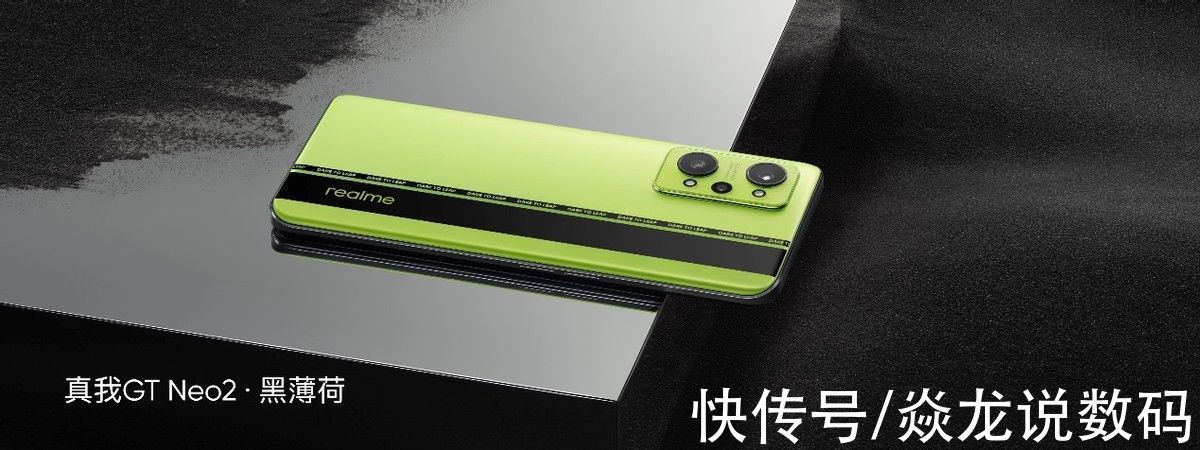Python内置数据类型中的集合详解
目录
- 1. 集合 set 简介
- 1.1 使用 { } 直接创建集合
- 1.2 使用 set() 函数创建集合
- 2. 集合没有切片功能!
- 3. 处理集合的常见内置函数
- 3.1len 函数
- 3.2map 函数
- 3.3filter 函数
- 3.4reduce 函数
- 3.5sum 函数
- 3.6max 函数
- 3.7min 函数
- 3.8sorted 函数
- 3.9 enumerate 函数
- 3.10 any 函数
- 3.11 all 函数
- 4. 集合的内置方法
- 4.1.add(val)
- 4.2.clear()
- 4.3.copy()
- 4.4.difference(set1,set2,...)
- 4.5.difference_update(set1,set2,...)
- 4.6.discard(val)
- 4.7.intersection(set1,set2,...)
- 4.8.intersection_update()
- 4.9.isdisjoint()
- 4.10 .issubset(other_set)
- 4.11 .issuperset(other_set)
- 4.12 .pop()
- 4.13 .remove()
- 4.14 .symmetric_difference()
- 4.15 .symmetric_difference_update()
- 4.16 .union(other_set)
- 4.17 .update(other_set)
- 5. 集合和运算符
- 5.1 - 运算符
- 5.2 | 运算符
- 5.3 & 运算符
- 5.4 ^ 运算符
- 5.5 in 、not in 运算符
- 总结
1. 集合 set 简介 集合的最大特征是其每个元素都是唯一的,它可以删除、可以增加、也可以通过增删实现替换元素,但是它是没有下标的,你无法通过下标或者切片功能访问集合。因为集合就像一个袋子里面装着颜色不一样的玻璃球,你可以替换玻璃球,但是无法指定玻璃球存放的地点。
它最大的作用,就是它元素的唯一,它经常被用来清除多余的数据。
1.1 使用 { } 直接创建集合
可以使用 {} 直接创建集合,但是不能使用 {} 创建空集合,因为 {} 被用来创建空字典。你只能通过 set() 来创建空集合。
1.2 使用 set() 函数创建集合
使用内置函数 set,可以快速的将其他类型的可迭代对象转换成 集合 对象。这些可迭代对象,可以是字符串、列表、元组等等。
print("创建一个空集合")print(set())str1 = 'ABCDEF!'s=set(str1)print("*"*40)print("一个由字符串转换的集合,每个元素即唯一的单独字符")print(s)list1 = [0,1,2,3,4,3,2,1]s=set(list1)print("*"*40)print("一个由列表转换的集合,但是在列表中重复的元素只会出现一次")print(s)
2. 集合没有切片功能! 请仔细理解,集合没有切片功能,这意味着什么,这意味着无法对它排序(当然可以转换成列表再排序),意味着无法用 while 循环配合下标依次获得元素,你可以用 for 循环获取。
3. 处理集合的常见内置函数
3.1len 函数
len 函数返回集合的长度,即元素的个数。
3.2map 函数
map 函数对集合中的每个元素进行相同的操作,然后返回一个 map 对象,再使用 set 函数可以得到集合。
>>> a{'sdf', 'er'}>>> set(map(lambda x:x+"-",a)){'er-', 'sdf-'}
3.3filter 函数
filter 函数对集合中的每个元素进行相同的操作,符合条件的元素才留下来,返回一个 filter 类型的对象。
>>> a{'sdf', 'er'}>>> set(filter(lambda x:len(x)==2,a)){'er'}
3.4reduce 函数
filter 函数依次对集合中的元素进行相同的迭代操作最后得到一个对象。
>>> import functools>>> a{'sdf', 'er'}>>> functools.reduce(lambda x,y:x+"~"+y,a)'sdf~er'
3.5sum 函数
sum 函数,只对元素是数值的集合有效,返回列表中的元素总和,如果元素类型不是数值,则返回 TypeError。
3.6max 函数
max 函数,返回集合中的元素最大值。
3.7min 函数
min 函数,返回集合中的元素最小值。
>>> a={1,2,3}>>> sum(a)6>>> min(a)1>>> max(a)3>>>
3.8sorted 函数
sorted 函数会对集合按照指定方式进行排序,请注意,使用 sorted 函数会得到一个排好序的列表,不是集合!!!原集合不会改变。
list1 = [0,1,2,3,4,3,2,1]s=set(list1)s1=sorted(s)print(s1)print(type(s1))

文章图片
3.9 enumerate 函数
enumerate 函数可以将一个集合依次取出。
3.10 any 函数
any() 函数用于判断给定的集合的所有元素是否都为 False,则返回 False,如果有一个为 True,则返回 True。
3.11 all 函数
all() 函数用于判断给定的集合的所有元素是否都为 TRUE,如果是返回 True,否则返回 False。
4. 集合的内置方法
4.1.add(val)
.add(val) 方法附加一个元素 val,如果 val 已经在集合中,那么原来的集合不变化。
4.2.clear()
.clear() 方法将集合清空。
4.3.copy()
.copy() 方法将返回集合的拷贝(而不是和原来的列表共用同一个地址)。
4.4.difference(set1,set2,...)
difference() 方法用于返回集合的差集,即返回的集合元素包含在第一个集合中,但不包含在第二、三、N个集合(方法的参数)中。
4.5.difference_update(set1,set2,...)
difference_update() 方法用于移除两个或者多个集合中都存在的元素。
difference_update() 方法与 difference() 方法的区别在于 difference() 方法返回一个移除相同元素的新集合,而 difference_update() 方法是直接在原来的集合中移除元素,没有返回值。
# 集合的使用a={1,2,3,4,1}b={4,5,6,7}# 1.集合是不会有重复的元素的print("1. ",a)# 2.集合使用 add 方法加一个元素a.add("6")print("2. ",a)# 3.集合使用 clear 方法清空a.clear()print("3. ",a)a={1,2,3,4}# 4.集合使用 copy 方法复制数据c=a.copy()print("4. ",c)# 5.集合使用 difference 方法返回#和其他集合不一样的数据print("5. ",a.difference(b))# 6.集合使用 difference_update 方法删除#和其他集合一样的数据# a={1,2,3,4}# b={4,5,6,7}a={1,2,3,4}b={4,5,6,7}print("6. ",a.difference_update(b))print("6. ",a)a={1,2,3,4}c={1}a.difference_update(b,c)print("6. ",a)# 7.集合使用 discard 方法删掉数据 vala={1,2,3,4}a.discard(2)print("7. ",a)

文章图片
4.6.discard(val)
.discard 方法删除集合中指定的元素。
4.7.intersection(set1,set2,...)
.intersection 方法返回集合的交集,自身不受影响。
4.8.intersection_update()
.intersection 方法原地改变自身为两个或者多个集合的交集。
>>> a={1,2,3,4,5}>>> b={2,3,4,5,6,7}>>> a.intersection(b){2, 3, 4, 5}>>> a{1, 2, 3, 4, 5}>>> b{2, 3, 4, 5, 6, 7}>>> a.intersection_update(b)>>> a{2, 3, 4, 5}>>> b{2, 3, 4, 5, 6, 7}
4.9.isdisjoint()
.isdisjoint 方法判断两个集合是否包含相同的元素,如果没有返回 True,否则返回 False。
>>> a={1,2,3,4,5}>>> b={2,3,4,5,6,7}>>> c={"a","b"}>>> a.isdisjoint(b)False>>> a.isdisjoint(c)True
4.10 .issubset(other_set)
.issubset 方法判断自身集合是否为该方法参数集合 other_set 的子集。
>>> a={1,2,3,4,5}>>> b={2,3,4,5,6,7}>>> c={1}>>> a.issubset(b)False>>> a.issubset(c)False>>> c.issubset(a)True
4.11 .issuperset(other_set)
.issuperset 方法判断该方法参数集合 other_set 是否为自身集合的子集。
>>> a={1,2,3,4,5}>>> b={2,3,4,5,6,7}>>> c={1}>>> a.issuperset(b)False>>> a.issuperset(c)True
4.12 .pop()
.pop() 方法将返回集合中的一个元素,原集合将删除该元素。
请注意,集合中的 pop 方法是没有 index 参数!如果像使用列表中的 pop 方法输入 index 参数,则返回 TypeError: pop() takes no arguments (1 given) 错误。
4.13 .remove()
.remove(val) 方法将删除集合中的 val 元素,返回为空。如果 val 不在集合中,则返回 KeyError 错误。
4.14 .symmetric_difference()
返回两个集合中不重复的元素集合,而不改变自身集合。
4.15 .symmetric_difference_update()
移除当前集合中在另外一个指定集合相同的元素,并将另外一个指定集合中不同的元素插入到当前集合中。
# 10.集合使用 ^ 操作符返回#两个集合中不一样的数据# 等同于 symmetric_difference方法a={1,2,3,4}b={4,5,6,7}tmp=a^bprint("10. ",tmp) print("a==>",a)print("b==>",b)print("使用 ^ 操作符 原来的集合不受影响")print("*"*60)print("a.symmetric_difference(b)==>",a.symmetric_difference(b))print("a==>",a)print("b==>",b)print("使用 symmetric_difference方法 原来的集合不受影响")print("*"*60)print("a.symmetric_difference_update(b)==>",a.symmetric_difference_update(b))print("使用 symmetric_difference_update 原来的集合会改变")print("a==>",a)print("b==>",b)print("*"*60)

文章图片
【Python内置数据类型中的集合详解】
4.16 .union(other_set)
.union 方法返回两个集合的并集,而不改变自身集合。
4.17 .update(other_set)
.update 方法给自身集合集合添加元素。
>>> a={0,1}>>> b={3,4}>>> c={5,6}>>> a.union(b){0, 1, 3, 4}>>> a{0, 1}>>> b{3, 4}>>> a.update(b)>>> a{0, 1, 3, 4}>>> b{3, 4}
5. 集合和运算符
5.1 - 运算符
a 、b 是两个集合;a - b类似于 a.difference(b) 方法,即返回集合a中包含而集合b中不包含的元素,自身不受改变。
>>> a={0,1,2,3}>>> b={2,3,4,5}>>> a-b{0, 1}>>> a.difference(b){0, 1}
5.2 | 运算符
a 、b 是两个集合;a | b类似于 a.union(b) 方法,即返回集合a和b中所有的元素,自身不受改变。
>>> a={0,1,2,3}>>> b={2,3,4,5}>>> a|b{0, 1, 2, 3, 4, 5}>>> a.union(b){0, 1, 2, 3, 4, 5}
5.3 & 运算符
a 、b 是两个集合;a & b类似于 a.intersection(b) 方法,即返回集合a和b中都包含了的元素,自身不受改变。
# 9.集合使用 & 选出集合重叠的部分#等同于 insection 方法a={1,2,3,4}b={4,5,6,7}print("*********初始数据***********")print("a==>",a)print("b==>",b)print("8. a & b==>",a & b)print("执行 a & b 后")print("a==>",a)print("b==>",b)print("使用 & 操作符 原来的集合不受影响")print("*"*60)print("8. a.intersection(b)==>",a.intersection(b))print("使用 intersection 方法 原来的集合不受影响")print("a==>",a)print("b==>",b)print("*"*60)print("8. a.intersection_update(b)==>",a.intersection_update(b))print("使用 intersection_update 方法 原来的集合会改变")print("a==>",a)print("b==>",b)print("*"*60)

文章图片
5.4 ^ 运算符
a 、b 是两个集合;a ^ b类似于 a.symmetric_difference(b) 方法,即返回不同时包含于a和b的元素,自身不受改变。
>>> a={0,1,2,3}>>> b={2,3,4,5}>>> a.symmetric_difference(b){0, 1, 4, 5}>>> a^b{0, 1, 4, 5}
5.5 in 、not in 运算符
in 运算符判断某个元素属于某个集合
not in 运算符判断某个元素不属于某个集合
>>> a={0,1,2,3}>>> 0 in aTrue>>> "0" in aFalse
总结 本篇文章就到这里了,希望能够给你带来帮助,也希望您能够多多关注脚本之家的更多内容!
推荐阅读
- python实现会员管理系统
- Pycharm远程调试和MySQL数据库授权问题
- 基于Python实现Hash算法
- k8s监控数据组件Pod自动化进行扩缩容HPA
- vue搜索过滤
- python|python 内部收益率_用Python计算可变现金流内部收益率(pandas)
- 数据可视化神器,深入解读Smartbi自助仪表盘
- 用于NLP的Python(使用Keras的多标签文本LSTM神经网络分类)
- 带你从内存的角度看Python中的变量
- Python全栈之学习CSS(2)













